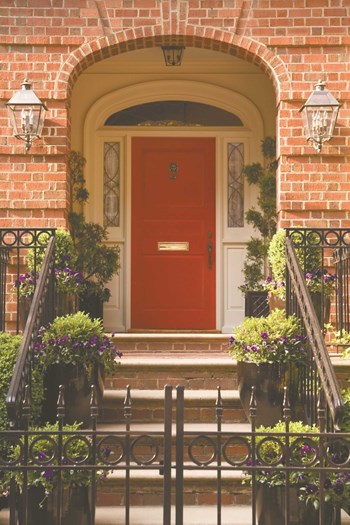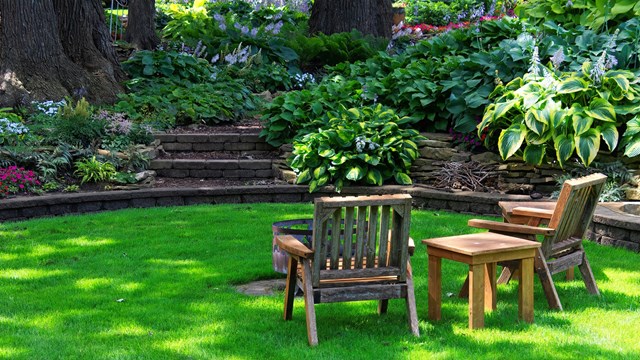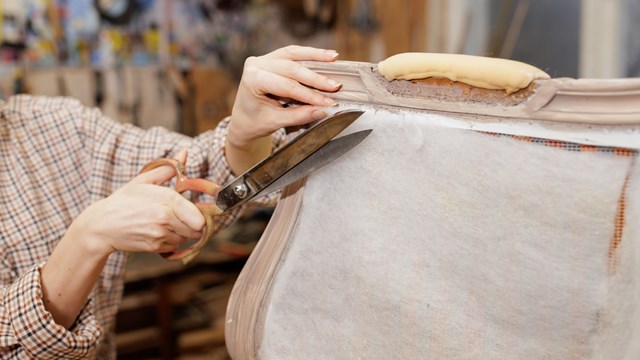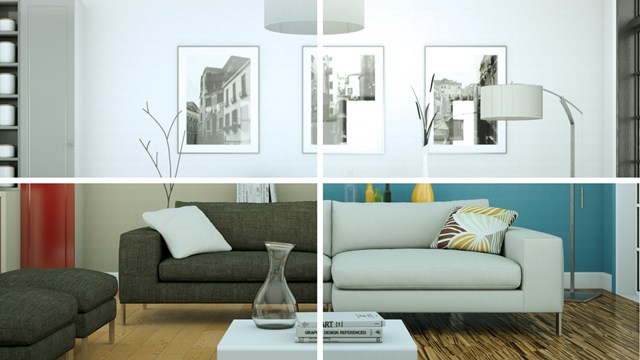
When you think landscaping, you probably don’t think of a swanky Chicago co-op or condo high-rise building. After all, landscaping is typically reserved for suburban homes where there is rolling turf, strategically placed trees, sprawling flower beds and maybe even a gazebo or fountain. No doubt about it that greenery and other design elements add to a home’s curb appeal and, in a slowly-improving economy, curb appeal increase value and attracts buyers.
But take a closer look at the outside of that same co-op or condo building and you’ll see that exterior landscaping is a vital part of the building’s look. Whether it’s curbside planters, historic shutters that complement the building’s veneer or dramatic lighting that draws attention to a unique aspect of the façade, there are ways to landscape the building outside that draw its attention to passersby.
Experts agree that landscaping makes a good first impression and increases the value of any building. If the exterior and the plants look good, people will think that the community is being taken care of and residents will want to live there.
Planning a Picturesque Exterior
With any spring project, sprucing up the building’s exterior starts with planning. “Generally you have a client and they come to you looking for ideas, they usually know basics but that’s it,” says Glenn Broadfield, account manager at Landscape Concepts Management in Chicago. “I try to scope out what their limitations are. Do they want to do something that is a seasonal change or something that is more sustainable, which would be shrubs and perennials. Then I find out what is their budget. Sometimes people will say ‘I want an English garden but my budget is $1,000.’ So that’s not going to happen. You have to find out what their expectations are and then realistically meet them. Theme, goal and budget are the three most important things when it comes to landscaping.”
“There are a few parameters we like to follow when planning for greenery for our clients,” adds Suzanne Coventry, LEED Green Associate, ISA Certified Arborist and account manager for ValleyCrest Landscape Maintenance in East Dundee. “One, location, exposure and care; what is the exposure from the sun, elements and or sidewalk traffic. Will there be children and pets? Location, who will see it? Is it at an entry or secondary focal area. Two is budget. The best way to handle this to be honest with what you want to spend. It helps us and you. Three, the most important one of all; walk your client through images, plants, pots and flowers. A picture is really worth a thousand words.”
Coventry also notes that containers are the added pop to entries and doorways. They welcome visitors and give an added special touch and provide mini-garden environments.
Follow the Rules
Planning your picturesque exterior and dramatic entranceway might come with some limitations depending on the history and design of the building.
According to the City of Chicago, “The landscape ordinance requires landscape features to be incorporated into all new or substantially renovated business, commercial buildings and large residential buildings. Planting standards are maintained by the Department of Streets and Sanitation’s Bureau of Forestry. The Department of Housing and Economic Development (HED) reviews all site plans to ensure that projects conform to the requirements of the ordinance.” For additional information on Chicago’s landscape ordinance go to www.cityofchicago.org.
There are also rules from the Department of Forestry that govern what kinds of ornamental landscaping a building can have out front, especially when it comes to planting trees.
For example, Parkway [where trees are planted on the sidewalk] tree planting is required for the construction of any principal building, for additions of a building in excess of 1,500 square feet of floor area and for the repair or rehabilitation of a building if the cost exceeds $10,000 or 50 percent of the building’s replacement cost.
“In the city of Chicago there is what is called the right of way, which is basically the city sidewalk out to the street,” says Broadfield. “A lot of people landscaping whether it be condos, or HOAs or private residences have to realize that that is pretty much everybody’s front yard.
“So when you go out onto the Parkway there is an ornamental bed which is basically framed in by the sidewalk and the street and the curb. That is usually the city right of way. We as people who are living in these spaces have a duty. The city wants residents to take care of that piece of ground. However, if you want to do anything in that piece of ground you are supposed to get a permit and have approval by the city. Are there regulations? Yes, do people abide by them? Not, really. There are loopholes.”
Coventry notes that you can’t impede traffic with temporary planters but permanent planters may have some requirements depending on the building and also if it is new construction versus old construction.
There are several types of shrubs, trees, plants and flowers that thrive best in a Chicago environment. “The native trees in Chicago would be hackberry and honey locust,” says Broadfield. “The problem with natives is that they are not always the most beautiful but there are so many benefits to using native plants. The biggest advantage is that they are trees that have always grown here. They have adapted and thrived in this climate.
For a full list of plants that are native to Chicagoland go www.best plants.org/toc.htm.
According to the city of Chicago’s website high quality, nursery-grown trees must be planted because of potential damage by pollutants such as salt and carbon monoxide common to city streets.
Other Features
Experts suggest lighting as an emphatic and affordable way to change and illuminate an exterior and it’s usually the least expensive and has the biggest impact without having to change the architecture.
Consider using texture too. “Texture is just as important as color,” says Coventry. “And you should always use durable plants, not finicky ones.”
Most importantly, when planning experts believe you should look above the first floor because when you step back you want to look over the whole building, not just one level.
Out-of-the-Box
When planning an attractive exterior, Tom Balsley, landscape architect for Thomas Balsley Associates, who has worked extensively throughout Chicago, suggests thinking out-of-the-box and utilizing existing open space to create a Privately-Owned Public Space, or POPS. “They’ve created small little parks or plazas at building entrances or beside them. Some are garden-like and some are plaza-like and they are public open spaces, but they are privately owned.”
Balsley says that sprucing up a building exterior, especially adding greenery, is about more than just picking a type of tree, shrub or flower. “We take any outdoor space and look at it holistically, which means not just beautifying or making it pretty but talking about the goals that the building might have in mind,” he says. “They may be looking for a sustainable landscape, and we help educate them on ways in which their landscape can participate in the green movement. We don’t just look at it as a physical amenity, but think about the cross-section of people who may be using the space and building and how. Our intent is to add value, not only to their investment, but also to the quality of their lives.”
Lisa Iannucci is a freelance writer and a frequent contributor to The Chicagoland Cooperator. Staff Writter Christy Smith-Sloman contributed to this article.









Leave a Comment